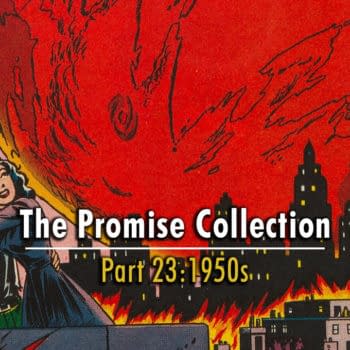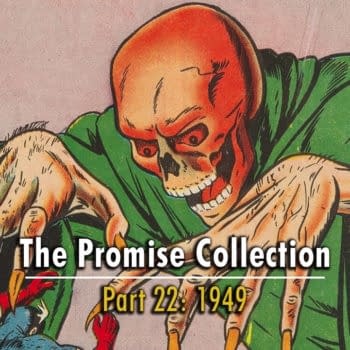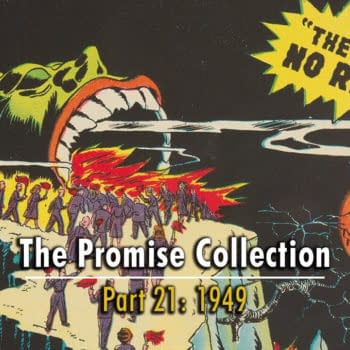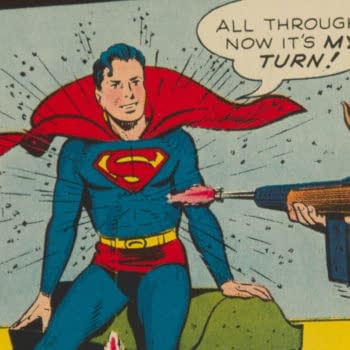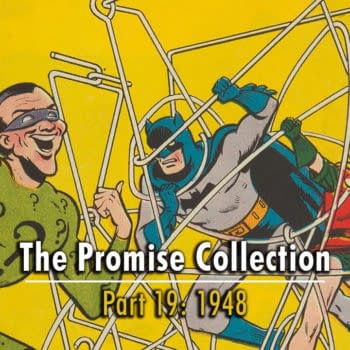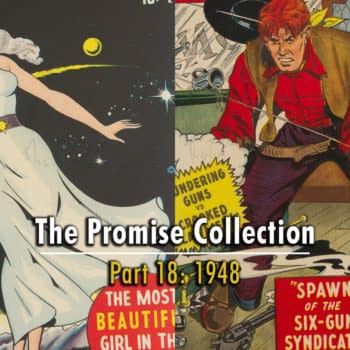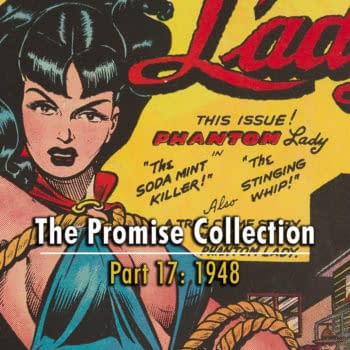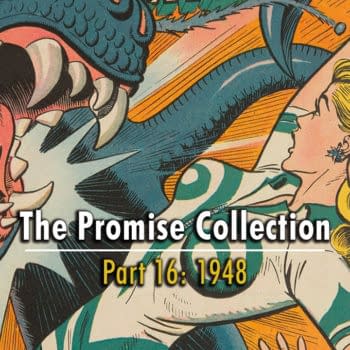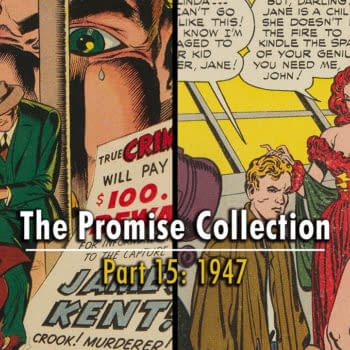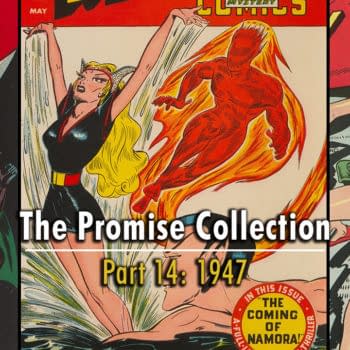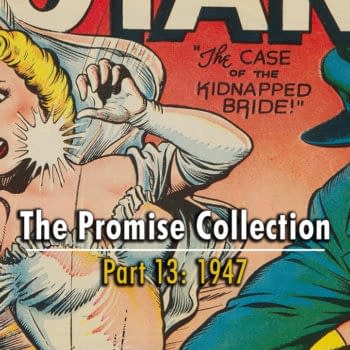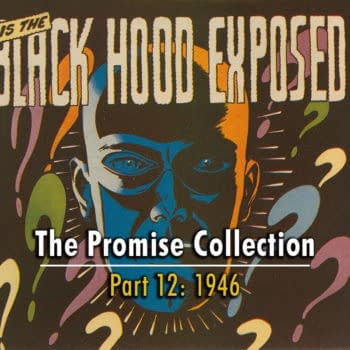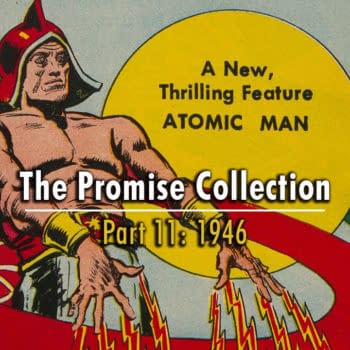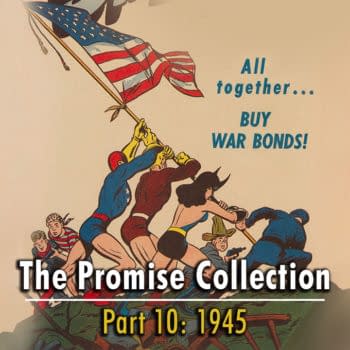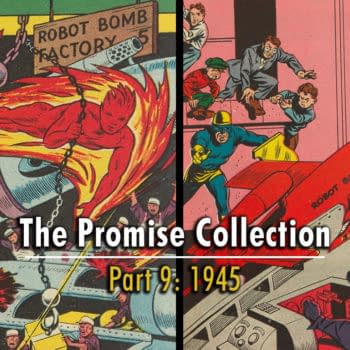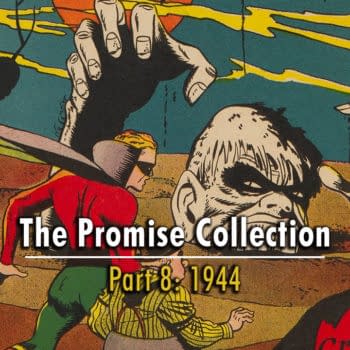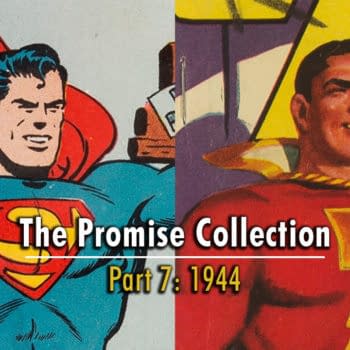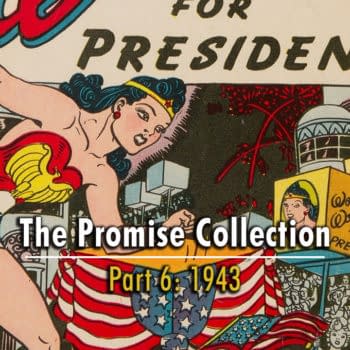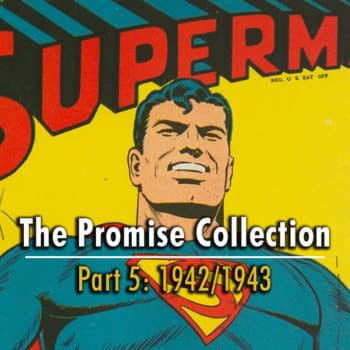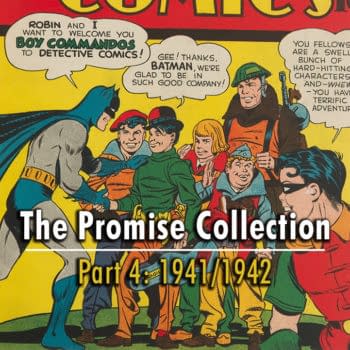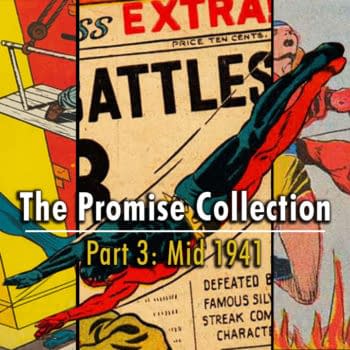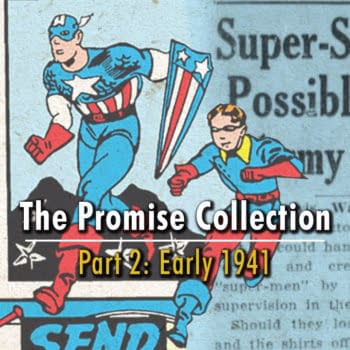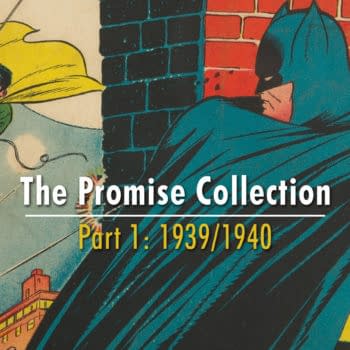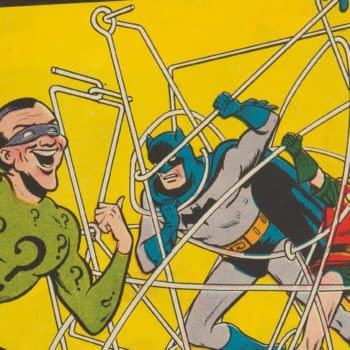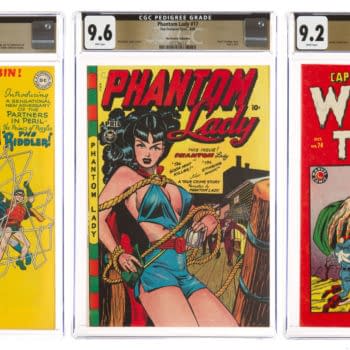1948-1949 represent the peak years for the Promise Collection in terms of volume. The young fan who started collecting comic books at the age of eight years old in 1939 would've turned 19 in 1950 — a young adult with an ever-increasing number of demands on his money and time, as these things often go. [...]
Promise Collection Archives
last week, new-style comic books with such come-on titles as Sweethearts, Romantic Secrets, Teen-Age Romances, and Young Love were outselling all others, even the blood and thunder variety," claimed a widely-reprinted Time Magazine article from late August 1949, discussing a comic book trend that was becoming apparent in the Promise Collection as the year progressed[...]
"In our magazines, we try to give you good pictures and interesting stories," wrote Stan Lee in an editorial published in Marvel comic books cover-dated July 1949. It was a sentiment the fan who assembled the Promise Collection likely agreed with "We would like to feel, also, that we are helping you to take a[...]
"A once-loyal army of 4 1/2 million readers has dwindled to 700,000 and these survivors soon are to have their supplies cut off," At the time of this April 1949 statement widely reported in newspapers, the fan who was assembling the Promise Collection was one such "survivor" who was reading some of Street & Smith's[...]
"So you think funny books are a bad influence on youngsters? Ha, scoffs 12-year-old Jackie." A few years younger than the fan who assembled the Promise Collection at this point, Jackie's interview was part of the growing push-back against comic book industry critics as 1948 drew to a close. "How about the grown-ups who read'em?[...]
It's hard not to wonder what the young fan who assembled the Promise Collection may have thought about the media and legal firestorm that surrounded the medium he loved as 1948 progressed. A frequent subject of newspapers, magazines, radio reports, and local school and parent organizations during this period, the controversy would likely have been[...]
It is perhaps no coincidence that perhaps one of the most infamous comic books in vintage comics history was published at a moment of one of the industry's greatest peril. The Promise Collection's copy Fox Features Syndicate's Phantom Lady #17 with its notorious Matt Baker cover recently sold for a record $456,000 — a result[...]
Gleason's comic book output was well familiar to the young man who was assembled the Promise Collection, as he had been reading Crime Does Not Pay, Daredevil Comics, and Boy Comics for years by this time And Gleason's fiery address — which obviously singles out Fredric Wertham — makes it clear that he was well[...]
"One point which I can't stress too strongly is: Don't write down to your readers," noted a young Stan Lee in his November 1947 Writer's Digest call for professional writers to consider the comic book market. About 25 years old at the time, Lee had already written a number of comic books read by the[...]
Perhaps ironically, Wilkes-Barre was the location of Central Color Press, whose owner Victor Fox was printing a few of the comic books that the Pennsylvania Chiefs of Police Association likely found objectionable, including series such as Phantom Lady which are present in the Promise Collection of this period "Pennsylvania Chiefs of Police Association today denounced[...]
"As to this enormous use of sexual symbols in comic books it is almost useless to speak, except to mention that it is a predictable enough result of censorship," declared self-proclaimed Marxist and cultural commentator Gershon Legman, in Love and Death, which was ostensibly a study of the relationship between censorship and violent and sexual[...]
Weisinger had not yet become a DC Comics editor, but he had contributed to numerous comics present in the Promise Collection by this time, including Superman, Batman, Detective Comics, and World's Finest Comics "If you're interested in crashing the publishing world, consider the fact that no other medium in the magazine field can boast as[...]
The force from which the sun draws its power has been loosed against those who brought war." The fan who assembled the Promise Collection would soon absorb some of the background and particulars of this event through direct references in comic books like Atoman Comics #1 and Four Favorites #22.
Headline Comics #17, the Promise Collection.
It[...]
The Promise Collection.
The photograph of the raising of the U.S Flag on Iwo Jima would also be the inspiration for a famous War Loan poster painted by artist C C Beall. Beall was a magazine and pulp artist who painted covers paint covers for Munsey Publications pulps, such as Argosy, All-Story Love, and Detective Fiction[...]
The Germans have erected many take-off points along the west coast, several of which the Allies have already been destroyed by bombs." It would be about a year before the fan who assembled the Promise Collection would see the "robot planes" in his comic books, and by that time, he probably also realized how much[...]
One day after Franklin Delano Roosevelt was elected to his unprecedented fourth term as President of the United States in November 1944, comic book and pulp publisher Alex Hillman announced that he had scaled back his comic and pulp lines in order to launch a general interest periodical called Pageant Magazine. Hillman told the New[...]
Miss Josette Frank of the Child Study Association of America declared that conflicts between parents and children over the subject of comic bocks might be far more harmful than the poorest comic book ever would be." The young fan who assembled the Promise Collection would've been about 13 in 1944.
Superman #26, Captain Marvel #18.
Around this[...]
Master Comics for one copy of Superman in the White House by O.W.I." This unassuming little blurb appeared next to other letters to the editor that day such as one opinion on Wendell Willkie's chances as the Republican candidate for President the next year, and several points of view on the merits of current President[...]
Such a statement would likely have been welcome news to the growing legion of young comic book fans, like the boy who assembled the Promise Collection — but the Writer's Digest piece would soon take a sobering turn While maintaining at the outset of the exchange that "The Government does not intend, at this time,[...]
Which in turn makes the magazines better and builds up the market."
Writer's Digest was certainly correct about the expanding market. There were roughly 750 comics on the American newsstand in 1940, about 950 comics in 1941, and nearly 1200 comics in 1942. And the Promise Collection was expanding even more dramatically over this period. The[...]
That boy is growing rare who has no Superman dungarees in his wardrobe or no Superman Krypto-Raygun in his play chest."
Detective Comics #53, Daredevil Comics #1, Bulletman #1.
But the young boy who assembled the Promise Collection, who would have been around 10 years old in 1941, may have been one of those rare exceptions —[...]
Throughout the early issues of his series which were on the newsstands in 1941 before America's entry into the war that December, Captain America fought battles against spies, saboteurs, fifth columnists, and propagandists on the home front — and as we shall see, the threats portrayed in those issues of Captain America Comics were reflective[...]
The Promise Collection is a set of nearly 5,000 comic books, 95% of which are blisteringly high grade, that were published from 1939 to 1952 and purchased by one young comic book fan. The name of the Promise Collection was inspired by the reason that it was saved and kept in such amazing condition since[...]
A Detective Comics #140 CGC 9.6 White Pages has just sold for $456,000 at this afternoon's session of this week's 2021 June 17 – 19 Comics & Comic Art Signature Auction from Heritage Auctions. The October 1948 cover-dated release from DC Comics features the first appearance of popular Batman villain the Riddler in a story[...]
When Bleeding Cool heard about the accumulation of Golden Age comic books known as the Promise Collection, this 1951 Life Magazine photo of American troops reading comic books during the Korean War was the first thing to come to mind. While World War II was part of what forged the modern American comic book industry[...]


